ninja007
Gold Member
A few months old, but a great idea...hoping to hear some good news soon.
Follow along with the video below to see how to install our site as a web app on your home screen.

Note: This feature currently requires accessing the site using the built-in Safari browser.
Bloated and eerily upright the large adult elephant was still standing where it had been killed - just next to the stream - its face hacked off. It had been fleeing the carnage in the mud 100m or so away, where the remains of four other adults and one young elephant lay fallen and disfigured, their tusks and trunks all taken for ivory and meat. Like a macabre statue, this faceless animal stood as a landmark to the horrors of poaching, of the ivory trade, and of the mass slaughter of the last remaining elephants in central Africa.
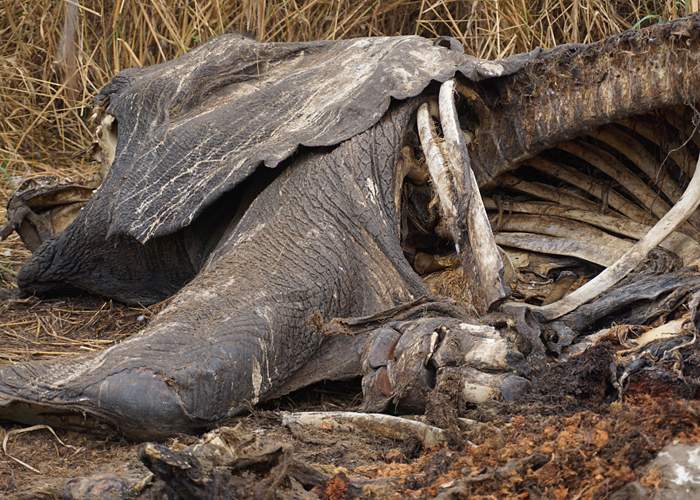
Elephant carcass, Garamba National Park, DR Congo
The pilot of the light aircraft was out on a regular reconnaissance mission when circling vultures drew him to the scene. The armed rangers on patrol nearby hadn't heard the shots, so it was the scavengers feasting on the carcasses that had raised the alarm. Garamba, in the north-eastern Democratic Republic of Congo, is one of the oldest national parks in Africa, designated in 1938.
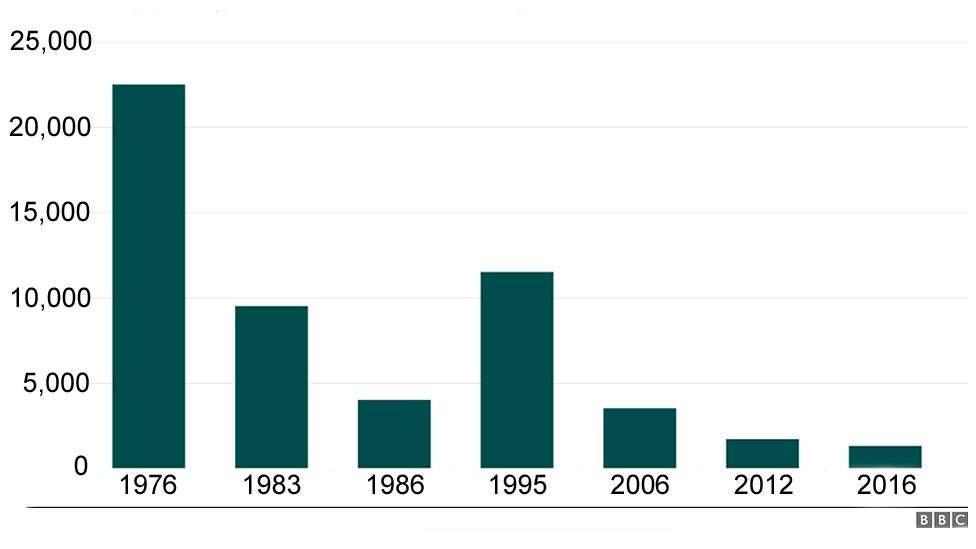
Elephant numbers in the Garamba National Park and hunting reserves
It covers 14,000 sq km (5,500 sq miles) dominated by savannah grasses, which when green and lush can reach 3m in height, enveloping the elephants and concealing them even from the air. It's tough going on foot with the criss-crossing streams that feed the great Congo River, punctuated by papyrus marsh, forest and scrub. The park was made a World Heritage Site in 1980 for its rare Northern White Rhinos, and with 22,000 elephants back then, they never seemed in danger.
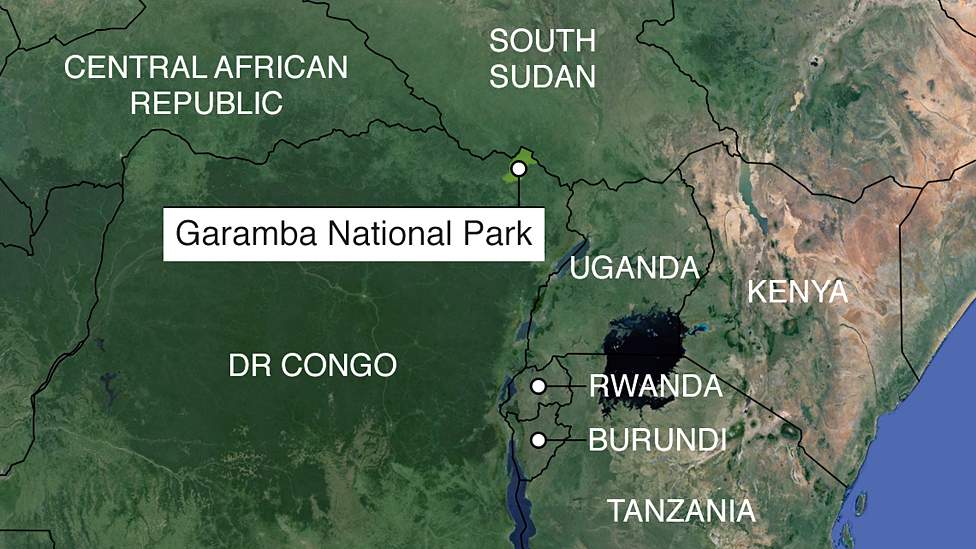
But the last rhino was seen some years ago. Poaching has wiped them out, and now with 95% of the elephants gone, and the killing continuing week after week, these giants are going the same way. It's not a good neighbourhood for conservation. “This park has, to a very, very large extent been poached out by various armed groups,” says Erik Mararv, the 30-year-old African-born Swede who manages Garamba for the non-profit organisation, African Parks.
MORE
Switzerland-based IUCN is regarded as the most authoritative source on wild fauna populations and the report's release at a U.N. conference on the global wildlife trade will lend a sense of urgency as some countries seek to keep the global ivory trade shut while others want to reopen it. "This is yet another set of data clearly indicating that governments must take all necessary actions to address the crisis," said Susan Lieberman, head of international policy for the Wildlife Conservation Society. The IUCN, which drew on a range of estimates and census data, said it now had a fairly accurate count of 415,000 elephants in Africa in the areas where extensive surveys could be taken, down from over 500,000 in 2006.
There are a number of regions where systematic surveys could not be taken and so it is difficult to say what is happening to elephants in such places. These include South Sudan, Liberia and savannah areas of Central African Republic. Losses in some countries have been staggering. Tanzania, which relies heavily on wildlife tourism, saw a 60 percent decline in its elephant population. "The surge in poaching for ivory that began approximately a decade ago – the worst that Africa has experienced since the 1970s and 1980s – has been the main driver of the decline," the IUCN said.
Elephant poaching has risen to meet red-hot demand among fast-growing consumer markets in Asian economies such as China's, where ivory is a coveted commodity used in carving and ornamental accessories. The IUCN noted that southern populations in "Namibia, South Africa and Zimbabwe are stable or increasing, and there is evidence of elephant range expansion in Botswana." But poachers are also training their guns on southern Africa with big declines noted in Mozambique, it said.
Namibia and Zimbabwe have submitted proposals to the UN's Convention on International Trade in Endangered Species (CITES), which is meeting in Johannesburg, seeking permission to lift a global ban on the ivory trade so they can sell stockpiles. This is opposed by other African nations such as Kenya which fear that illicit ivory can be laundered with clean supplies and that it could stimulate demand for a commodity which has one main source - a dead elephant.
African elephant population tumbles due to poaching

Poachers in the Southeast Asian country have turned to slaughtering the animals for their skin as the ivory trade dwindled under pressure from wildlife conservation advocates. There are about 1,400-2,000 wild elephants in Myanmar, according to Coconuts Yangon. The number of the animals being killed has doubled in recent months. Male, female and baby elephants are being targeted for their skin, which buyers believe bring the wearer good luck when it is worn like jewelry, the report states.
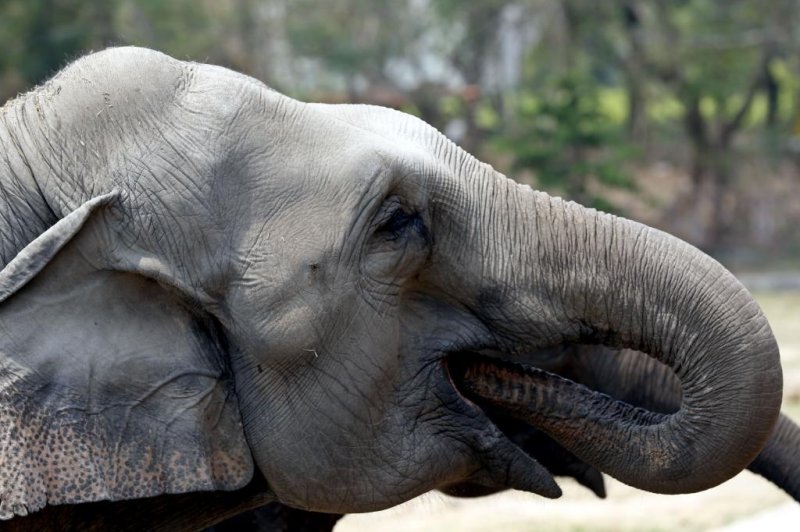
Elephants in Myanmar are being slaughtered at record numbers owing to a "skin trade fad," according to the World Wildlife Fund.
The illegal ivory tusk trade, by contrast, singles out male elephants. "Asian elephants are already facing tremendous challenges across their range," said Nilanga Jayasinghe, the World Wildlife Fund's senior program officer for the animals. "Adding to those is this new trend that we are seeing in Myanmar of herds being indiscriminately poached for their skin. It is extremely alarming."
Christy Williams, country director of WWF Myanmar, said there has been a rapid surge in the "skin trade fad," which has "been driven by growing Asia-based demand, compounded by weak law enforcements and fueled by borderless illegal syndicates operating across Southeast Asia." A lack of resources for training local authorities to guard against poachers was cited as a cause for the outbreak of poaching in the country.
Poachers in Myanmar killing elephants for their skins



A decorated U.S. war veteran with two decades' experience in military intelligence, Lt. Col. Faye Cuevas spent half her career providing intelligence support to U.S. counter-insurgencies in Iraq, Afghanistan and the Horn of Africa. Now she is using her expertise to fight a different kind of conflict: the war on wildlife poaching. Calling herself "the accidental conservationist," Cuevas, an air force officer and a trained lawyer originally from Le Center, Minnesota, is not your typical wildlife enthusiast. She is determined to use her skills, honed in conflicts all over the world, to help save the planet's remaining wild elephants. "If you start to really untangle how poaching happens — how poachers are armed, how they're connected into larger networks and how those networks can move ivory and horn on a global scale, who protects them? Who provides logistics? — it resembles a war in anything but name," Cuevas said.
In the U.S. Air Force, Cuevas worked on America's controversial drone program, collecting intelligence on individuals and organizations identified as threats. "Getting left of boom" was the term used to predict and prevent the next bomb attack. Cuevas can pinpoint the moment she realized that she wanted to fight poaching. "The first time that I saw an elephant in the wild was in Amboseli National Park here in Kenya two years ago," she said. "It was life-changing." "At the current rate of elephant decline, my 6-year-old daughter won't have an opportunity to see an elephant in the wild before she's old enough to vote," she said. "Which just is unacceptable to me, because if that is the case then we have nothing to blame that on but human apathy and greed." She realized that she could use the "left of boom" concept to help wildlife rangers get "left of kill."

Faye Cuevas of the International Fund for Animal Welfare (IFAW) explains some of the tactics used, at the headquarters of the Kenya Wildlife Service in Nairobi, Kenya
Enter tenBoma — or "10 homesteads" — which uses technology to pull together diverse sources of information, from rangers to conservation groups. She analyzes the data to "create value in information in ways that it rises to the level of intelligence." Together with the U.S.-based International Fund for Animal Welfare, Cuevas introduced a smartphone-based software app that allows rangers and field investigators to enter and share information immediately, rather than write it up in reports at the end of a day's patrolling. "The Kenya Wildlife Service and other many conservation groups are doing fantastic conservation work," Cuevas said. "However, the reality is that there are other challenges — from a cyber perspective, from a global criminal network perspective — that really necessitate security approaches integrated into conservation strategies." The number of Africa's savannah elephants had dropped to about 350,000 by 2014 because of poaching, according to a recent study.
MORE
They died after drinking water with high concentrations of salt, the Kenyan government says. The animals were among 14 black rhinos being transported from Nairobi National Park to the country's biggest national park, Tsavo East. Estimates suggest there are fewer than 5,500 black rhinos in the world, all of them in Africa and some 750 in Kenya.
Kenya Wildlife Service vets believe the more the animals drank, the thirstier they became, which quickly lead to salt poisoning, although an independent investigation has been launched to confirm the cause of death.
Kenyan conservationist Paula Kahumbu told AFP news agency: "Something must have gone wrong, and we want to know what it is." The relocation of endangered animals involves sedating them for the journey and reviving them on arrival. The process is known as translocation.
Estimates suggest there are fewer than 5,500 black rhinos in the world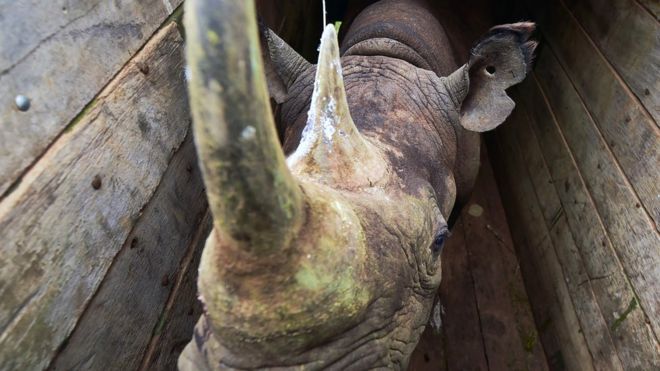
The WWF conservation agency, which runs the programme with the Kenya Wildlife Service (KWS), described the process as "extremely challenging" in a statement released to Kenya's Daily Nation newspaper. "Black rhinos are under enormous threat, so efforts to try and better protect them, such as translocation, are crucial for future generations," i said. Rhinos are often moved when their populations outgrow their surroundings. In the case of critically endangered black rhinos, the moves can establish new breeding habitats to boost numbers.
Nine rhinos were killed in Kenya last year, according to KWS, and in March, the world's last surviving male northern white rhino died after months of poor health. He had previously joined the dating app Tinder to raise funds for his conservation.
Endangered rhinos die during transport